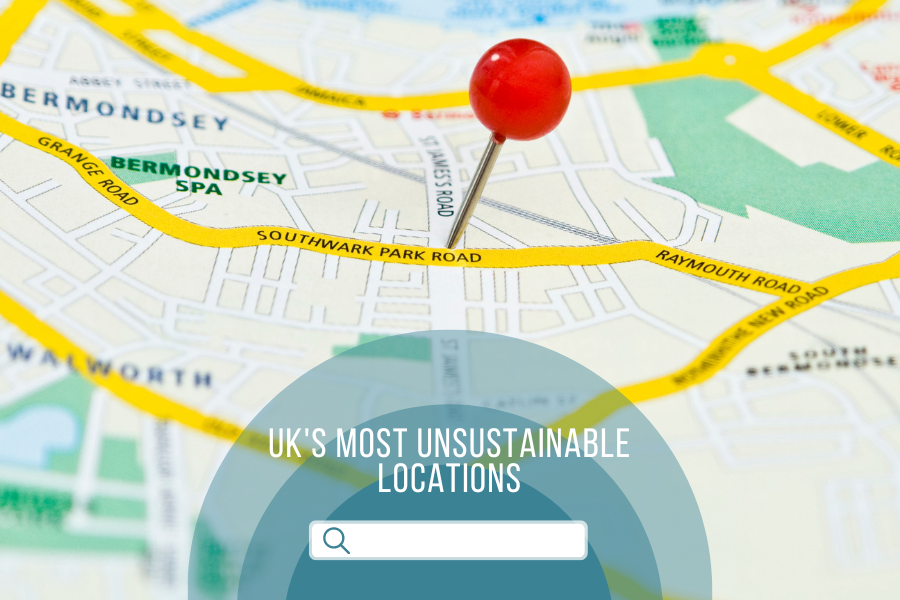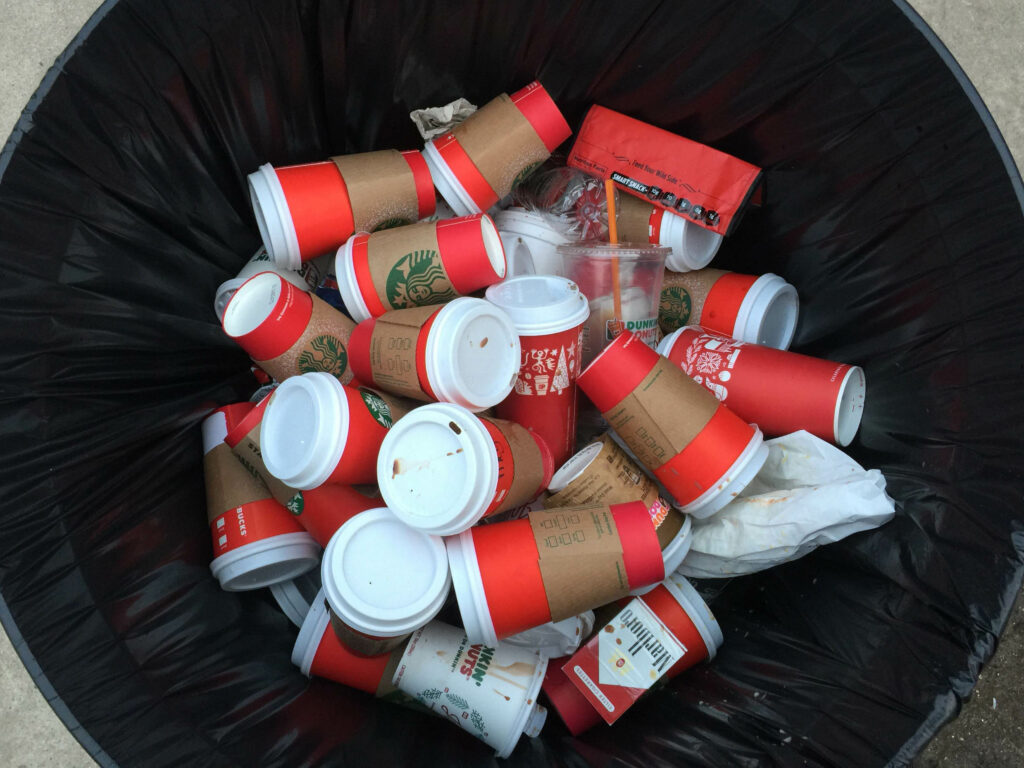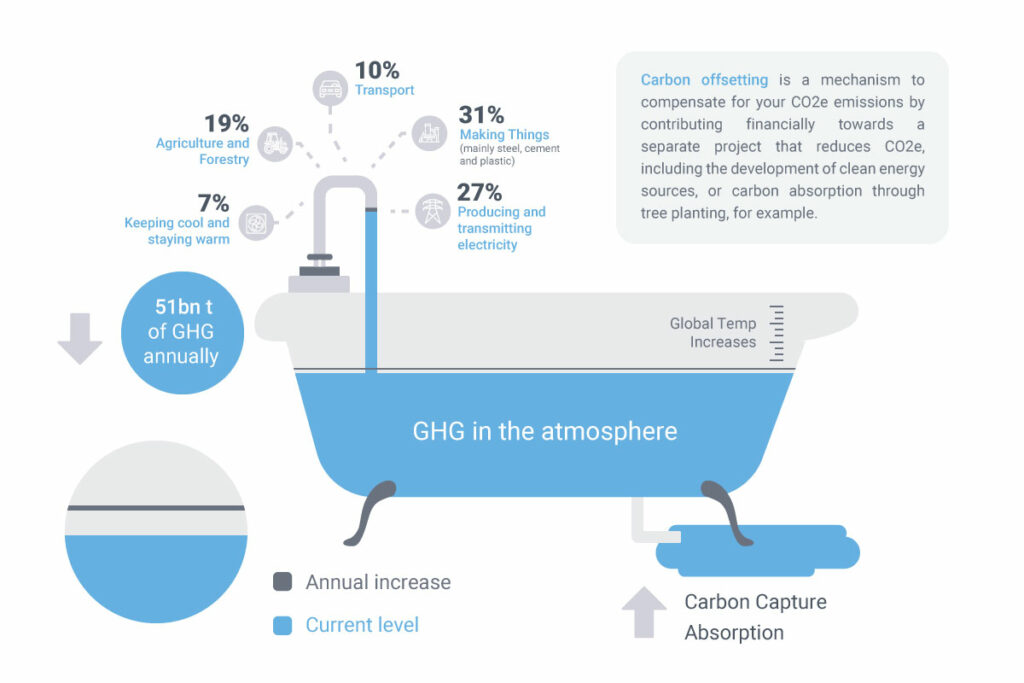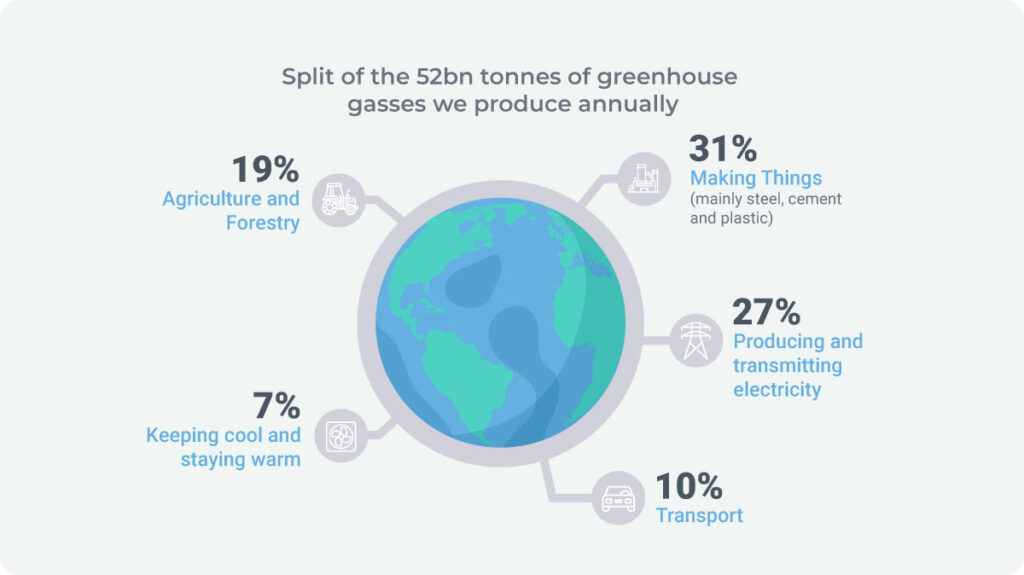The global throw-away society is one of the most significant sources of today’s climate crisis. Although businesses and individuals across the country consider waste reduction practises a norm, our new study reveals that there’s still work to be done to improve recycling and reduction rates.
In the UK, the largest contributor to methane emissions from the waste sector is landfill, accounting for 81% of emissions from the sector¹. This highlights the need for businesses and individuals to step up their commitment to the zero-to-landfill movement.
Following this, our new study uncovers the top ten locations in the UK that are the worst for sending waste to landfills and would benefit from businesses implementing waste reduction strategies in these places.
The findings are based on insight obtained by us through Freedom of Information requests (FOIs) sent to 424 UK councils, of which 45 councils responded². The top ten councils that recorded the most landfill waste in the past three years include (2020 to 2022):
- Cambridgeshire County Council – 331,765 tonnes
- Chichester District Council – 143,195 tonnes
- West Sussex County Council – 143,195 tonnes
- City of Glasgow – 127,604 tonnes
- Leicester City Council – 126,187 tonnes
- Surrey County Council – 123,621 tonnes
- Causeway Coast and Glens Borough Council – 123,458 tonnes
- Perth & Kinross Council – 117,692 tonnes
- Falkirk District Council – 77,065 tonnes
- Fermanagh and Omagh District Council – 62,210 tonnes
Let’s break this down:
The study reveals that businesses and individuals in these locations have sent a staggering 1,375,992 tonnes of commercial and household waste to landfill between 2020 and 2022. Of these ten locations, Cambridgeshire County Council takes the top spot for generating the most waste within this period (331, 765 tonnes).
Cambridgeshire County Council
Between 2020 and 2022, Cambridgeshire County Council saw 331,765 tonnes of waste sent to landfill, with an average of 405 tonnes heading to landfill every day in 2022. The council has seen a 17% increase in waste over the three years (105,228 tonnes to 331,765 tonnes). In 2020, the average amount of waste being sent to landfill per day was 287 tonnes, and in 2021, 283 tonnes.
Incorrect waste disposal
Cambridgeshire’s increase in waste to landfill could be attributed to businesses disposing of their waste incorrectly. In November, a business based in Harston was fined £300 for disposing of their trade waste incorrectly³, leaving it at a Household Waste Recycling Centre, suggesting that businesses are still unclear of the procedures to dispose of their business waste correctly.
Under environmental laws, businesses are required to have their waste collected by an Environment Agency registered waste contractor, completing a Waste Transfer Note, which confirms safe disposal for each load of waste that leaves a business’s premises.
If the correct procedures are followed, and councils continue to encourage this, businesses can be assured that their waste isn’t being dumped illegally, and councils can be safe in the knowledge that this could prevent fly-tipping too.
Chichester District Council
Located in West Sussex, Chichester District Council comes second in our list of the locations contributing a whopping amount of waste to landfill. This location saw 143,195 tonnes of waste sent to landfill sites between 2020 and 2022, and per day, Chichester sees 83 tonnes of waste being thrown into landfill. Although this is a hefty amount, it’s a considerable decrease compared to Cambridgeshire County Council (-71%).
West Sussex County Council and the City of Glasgow
Positively, West Sussex County Council and the City of Glasgow have seen decreased waste being sent to landfill between 2020 to 2022. This is an optimistic step in the right direction in the fight against waste and, subsequently, climate change. In 2020, West Sussex’s total tonnage stood at 75,701 and in 2022, 30,242 (-60%). In Glasgow, waste sent to landfill in 2020 came in at 44,380, and in 2022, 27,923 (-37%).
Other local authorities which have seen a substantial amount of waste being sent to landfill sites within their locations include Leicester City Council (126,187 tonnes), Surrey County Council (123,621 tonnes), Causeway Coast and Glens Borough Council (123,458 tonnes), Perth and Kinross Council (117,692 tonnes), Falkirk District Council (77,065 tonnes), and Fermanagh and Omagh Council (62,210 tonnes).
Partnering with a sustainable waste management company
Businesses, individuals, and councils across the UK should be really concerned about what happens to waste in landfill because the process is a major source of pollutants and contributes to global warming. It produces toxins, leachate, and greenhouse gases which pollute our planet, and it’s currently doing so at an alarming rate.
If businesses put the environment first and commit to working with a sustainable waste management company, sustainability metrics will be improved by increasing recycling rates as well as reducing and automatically offsetting emissions, and in the long run, it would help to achieve their zero-to-landfill targets.
For more information on how we can help industries dispose of commercial waste safely and sustainably, please visit: https://envirovue.io/industries/
Sources
- Data obtained by Envirovue from 5 UK councils by a Freedom of Information Request on the amount of waste sent to landfill within these local authorities. Data correct as of January 1st 2020, and October 31st 2022. Waste recorded is a culmination of business and household waste.
- South Cambridgeshire District Council






About The Author: Wild PR
More posts by Wild PR